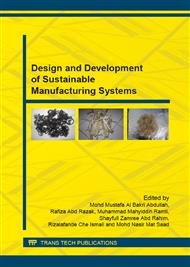p.216
p.221
p.229
p.234
p.238
p.243
p.253
p.258
p.264
3D Stress Analysis of ITER Tokamak Assembly
Abstract:
International Thermonuclear Experimental Reactor (ITER) is build based on the ‘tokamak’ concept of magnetic confinement, in which the plasma is contained in a doughnut-shaped vacuum vessel which powered up by the fuel of a mixture of deuterium and tritium. The two isotopes of hydrogen are then heated to a certain temperatures in excess of 150 million °C, forming hot plasma. The Blanket Module (BM) is arranged around the plasma to provide thermal and nuclear shielding for the vacuum vessel (VV), magnets, and other external component. Therefore, it is important to determine parameter that would affect the development process of BM. Analysis is very important in the design process for the ITER BM as well as nearby components. So a finite element model was developed on the BM and the detail part of the BM was developed using computer aided design (CAD) software. The detail part was inserted into the VV and several simulations were performed to find out the stress distribution within the wall of the BM. The constraint condition was find out and evaluated. The result shows that the maximum shear stress is 539.97MPa which exceed the allowable value of 515MPa. The result shows some acceptable stress levels in most of the analysed geometry. The result obtained was used to further modify the BM design in the cases where limits are exceeded.
Info:
Periodical:
Pages:
238-242
Citation:
Online since:
November 2015
Authors:
Keywords:
Price:
Сopyright:
© 2015 Trans Tech Publications Ltd. All Rights Reserved
Share:
Citation:


